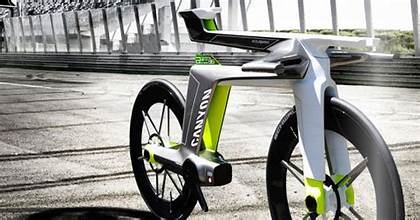Power-Boosted Rides with Electric Bike Technology
Electric-assisted cycles, often called e-bikes, bring advanced support to daily travel and long-distance rides. Fitted with pedal-assist motors, these power-driven two-wheelers make uphill climbs feel easy and longer rides less tiring. Riders across cities now prefer e-bikes for a cleaner, cost-friendly substitute for cars. Built with battery-operated motors, these innovative machines offer effortless riding for people of all fitness levels.
How E-Bikes Improve Every Journey
-
Less Physical Strain: Motor support makes it easier to ride longer distances without fatigue.
-
Budget-Friendly Travel: Reduces fuel expenses, parking fees, and vehicle upkeep.
-
Eco-Conscious Choice: Zero emissions help reduce environmental harm.
-
Reliable for Urban Travel: Maneuver easily through traffic, especially in crowded cities.
Smart Bicycles | The Era of Intelligent Riding
Modern cycles now include intelligent systems that upgrade safety, navigation, and user experience. These tech-powered bikes combine electronic features with traditional frames, giving riders access to tools previously found only in cars.
Built-In Navigation and Ride Monitoring
-
Real-Time GPS: Find new paths, track distance, and receive directions.
-
Cycling Analytics: Speed, cadence, heart rate, and ride time are stored and tracked using fitness software.
-
Performance Goals: Easily monitor calories burned and personal records during rides.
Digital Locking and Theft Alerts
-
Smart Lock Integration: Unlock bikes via mobile devices and deter theft.
-
GPS Tracking: Track bike location through connected apps.
-
Motion Alerts: Get alerts when unauthorized movement occurs.
High-Tech Bike Frames | The Rise of Advanced Materials
Frame construction has shifted from heavy metals to next-gen compounds. Today’s models feature designs crafted from innovative materials that offer both lightness and durability.
Carbon Fiber Frames for Speed and Control
Favored by racing cyclists, carbon fiber helps create aerodynamic builds. Its stiffness and flexibility absorb road shock better, making it the go-to choice for high-speed adventures.
Titanium-Structured Builds for Ultimate Strength
Titanium stands as a strong, corrosion-resistant element. These bikes rarely rust and can endure rough terrain for decades, delivering a smooth ride even on uneven paths.
Lightweight Aluminum Frames for Balanced Rides
Aluminum frames blend cost-efficiency and performance. While lighter than steel, they also remain robust enough for daily commuting, fitness cycling, or casual riding.
Boosting Speed Through Aerodynamic Efficiency
Streamlined bicycle shapes are built to fight wind resistance and increase motion efficiency. Aerodynamics affect every part of a bike, from frame shapes to spoke thickness.
Performance-Oriented Frame Shapes
Frames now come with sloped top tubes, compact geometry, and integrated handlebars, each designed to cut through air. Reduced drag leads to faster times, particularly important in races.
Speed Wheels and Bladed Spokes
New wheels include deep rims and flat spokes, crafted for slicing through wind. Paired with low-resistance tires, this setup allows faster travel with less pedaling force.
Tech-Connected Bikes and Mobile Compatibility
Bikes now sync with mobile apps and gadgets to offer real-time data, route history, and health stats. Riders enjoy better control and feedback during every ride session.
Bike Computers with Real-Time Feedback
Speed, distance, and cadence tracking are now visible on small bike-mounted screens. Riders can review their progress and switch riding modes mid-ride.
Mobile Apps for Cyclists
Apps like Garmin Connect and other cycling tools let riders review performance, join challenges, and share accomplishments. These digital platforms create communities built on data-driven cycling.
Improved Safety Through Modern Innovations
Safety always matters in biking, and today’s designs include enhanced protection systems. Bikes now come equipped with features designed to reduce risks and raise rider awareness.
Impact-Resistant Helmets with MIPS
MIPS helmets protect heads from rotational forces during falls. This inner-layer system offers extra protection compared to traditional designs.
Adaptive Lighting Systems for Visibility
Smart lighting responds to weather and surroundings. Rear and front lights now brighten automatically as environments grow darker or rain begins to fall.
Collision Awareness Systems in Urban Bikes
Built-in proximity sensors can warn riders of approaching vehicles or road obstacles. This tech helps prevent accidents by alerting cyclists before danger strikes.
Future Technologies Shaping Bicycles Ahead
Upcoming innovations promise exciting changes to the cycling world. Researchers and engineers are building systems to further simplify rides and promote sustainability.
Self-Navigating Bicycles for Urban Use
Autonomous bikes may soon appear on city streets. These automated vehicles would function as delivery units or rentals that self-dock after use.
Long-Lasting Batteries with Fast Charging
Battery advances will lead to lighter packs with more power and shorter charge times. New materials will allow e-bikes to run farther with fewer recharges.
Eco-Friendly Bike Components
Green building materials like recycled metals, hemp fibers, or plant-based composites are entering the production phase. These changes help limit waste and reduce carbon emissions during manufacturing.
Questions About Modern Bicycles and Tech
What range do e-bikes usually offer?
Most e-bikes travel between 20 and 50 miles per charge, depending on motor strength, battery type, rider weight, and road slope.
Are smart bikes good for beginners?
Yes. New riders benefit from features like guided directions, fitness tracking, and digital locks.
What’s the best way to care for carbon fiber frames?
Keep frames clean, inspect for surface cracks, and never overtighten bolts during repairs. Use only the recommended torque on delicate parts.
Do connected apps work with all bikes?
Only bikes with built-in sensors or compatible add-ons will sync with cycling apps. Check your bike’s tech specs before connecting.
Is titanium worth the price?
Though costlier than aluminum, titanium bikes last longer and deliver smoother rides. Ideal for riders seeking longevity and minimal maintenance.
Summary | Tomorrow’s Ride Begins with Smart Bikes
Bikes have shifted from mechanical devices to advanced, rider-focused machines. Whether through e-assistance, smart tracking, or safer builds, today’s cycles offer unmatched convenience and capability. With ongoing updates in battery power, material science, and digital features, the biking world continues to evolve. Riders who embrace these upgrades enjoy improved journeys, stronger builds, and better experiences.

